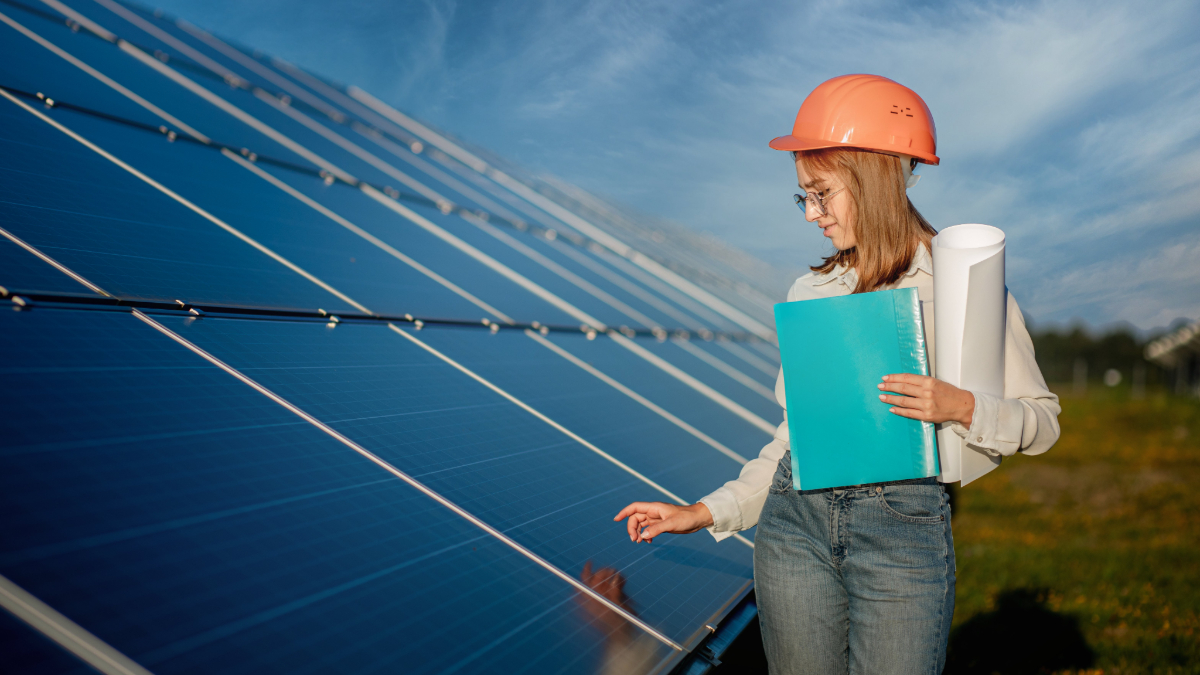
Power outages have grown common all around the world. Excessive grid load and unequal electricity distribution across grids are two factors. The end-user has undoubtedly suffered, and a substitute for the primary supply is the only preferable choice. Inverters are developed and are made available in the market like Maurice Electrical Supply to meet this critical demand.
Using a solar inverter, you will have the additional benefit of off-grid power generated by the sun, which is entirely free. This will reduce your monthly electricity expenses.
What Exactly is a Solar Inverter?
The “photovoltaic effect,” which happens when sunlight strikes solar cells, is a physical and chemical process that produces electricity. The power produced by this method is direct current (DC). Most appliances, however, are powered by alternating current (AC). The solar inverter’s primary purpose is to transform the direct current (DC) power generated by solar panels into useable alternating current (AC), making inverters critical to the success of your solar panel system.
Solar inverters are the most critical components of a residential solar power system. It tries to switch from direct current to alternating current. Furthermore, it converts the power generated by solar panels. Without this, the solar power system will be unable to illuminate your entire home and provide power to most of your devices.
Dcbel has developed a new solar inverter that replaces six different pieces of home solar equipment. It provides solar energy conversion and fast DC charging of EVs along with transforming its battery into a backup power source.
What are the Types of Solar Inverters?
String inverters, power optimizers, and microinverters are the three primary types of inverter technology available for your solar project. String inverters and power optimizer systems employ a central inverter to convert the electricity from all your panels from DC to AC. At the same time, microinverters do it at each solar panel.
String inverters combine the output of groups of solar panels in a system to form “strings,” which are then connected to a central inverter, where power is converted from DC to AC. A string inverter allows you to connect many “strings” of panels to the same central inverter, allowing more flexibility in your solar panel system design. On the other hand, String inverters do not allow panel-level optimization, making them less ideal for installations with shading during the day or complicated roofs. String inverters are often the least priced inverter option and ideal for continuous sunlight and simple roofing homes.
Power optimizers are positioned at each panel and connected with a central inverter to complete DC to AC electricity conversion. Power optimizers do not convert direct current to alternating current; instead, they “condition” direct current to maximize its voltage before transferring it to a string inverter to be converted. Compared to employing string inverters alone in shading circumstances, this leads to greater overall system efficiency. Power optimizers can assist in minimizing overall system inefficiencies in cases when individual panels are expected to see a decline in production during the day owing to shade or other causes.
Each panel site also has microinverters, although they are not linked to a string inverter. Compared to power optimizer systems, microinverters convert DC to AC straight at the panel. Compared to employing a string inverter alone in shading conditions or on complicated roofs, this strategy also optimum electricity output. In addition, microinverters can further reduce the system-wide consequences of a single panel underperforming by immediately converting DC to AC electricity at each panel location.
How to Choose the Best Solar Inverter?
There are several methods for comparing solar inverters. Here are a few essential metrics to remember:
Efficiency
The efficiency of a solar inverter indicates how successfully it transforms DC power from solar panels into useable AC electricity. Energy is lost in heat throughout any electrical conversion process; the fewer the energy losses, the better the efficiency. Higher efficiency inverters usually are more expensive, but they will assist in maximizing your panel system’s power production.
Warranty
Many solar inverter providers guarantee at least ten years, but others may go up to twenty-five. Check to determine whether your solar inverter is warranted for the same period as your solar panels. If you don’t want to worry, several inverter manufacturers provide extended warranties for a fee, or your contractor may offer it for free as an added perk of choosing their quote).
How to Determine the Size of an Inverter?
The maximum output capacity of the inverter must be at least 75% of the capacity of the solar array. In other words, the array capacity can be up to 133 percent of the inverter capacity.
The CEC established this guideline, and solar PV installations must follow it to qualify for STCs (Small-scale Technology Certificates, the financial incentive scheme or “rebate” that applies to solar panel systems).
If you have a 6kW solar array, the inverter must handle a maximum of 6kW of electricity. Thus, you may purchase a 6kW inverter. That is the fundamental concept, but in practice, a solar panel array will seldom, if ever, generate its entire rated maximum owing to a variety of factors such as the quantity of sunshine, the age of the panels, the ambient temperature, and so on. As a result, you may use a smaller inverter (or another way to oversize the solar array). You might utilize a 4.5kW inverter for a 6kW solar array. This will very certainly cost hundreds of dollars less than a 6kW inverter.
It is essential to consider that if you reach the maximum array size for the inverter, it will be difficult to install more solar panels in the future unless you add a second inverter or improve the present one.
Other factors like the other components of the system, local rules about solar export to the grid, and so on may limit the size of the inverter you may install.
Solar Inverter Power Consumption
Solar inverters collect solar energy and use it to charge batteries. If a solar inverter’s charging portion is inefficient, it will lose electricity even after the battery is fully charged. You may conduct the same experiment at home. Turn off all devices except the inverter’s power supply, disconnect the storm, and record the power usage for a specific time.
Lights and an Indicator Panel
If the inverter includes a display screen, it may show various data such as current power output, long-term data, and so on. Indicator lights often indicate if the system is operating correctly, whether there is a defect if the system is currently sending electricity to the grid, and so on.
Examine the display/indicators regularly, say weekly, to ensure no faults or alerts require care.
System of monitoring.
Many inverters and optimizers provide more complex monitoring features. This is frequently accomplished through your home router’s Wi-Fi or Bluetooth connection. The performance of your system is recorded and may be accessed via an app or a website. You can monitor how your system operates during the day and seasons, measure electricity delivered into the grid, and more.
It should be noted that if the inverter or optimizer manufacturer goes out of business, the monitoring system may no longer be maintained—another compelling reason to stick with well-known brands.
If the inverter lacks an intelligent monitoring capability, you may want to consider investing in a third-party monitoring solution, such as Solar Analytics. These systems may have recurring payments for services, but they can provide extensive reports in exchange.
Expert Glen Morris thinks that monitoring is beneficial, but he has found that most people lose interest after the first several months. If you’re not going to employ advanced tracking, don’t pay for it.
In General, What Is the Importance of Buying a Solar Inverter?
A solar inverter is an integral part of any solar power system. It converts all of the direct current (DC) power generated by the solar panels into alternating current (AC) power that may be utilized to power anything that requires energy. The power gathered by solar panels has nowhere to go without an inverter. More than that, the inverter is the brains of a solar energy system, providing ground fault prevention and overall performance statistics. If there is a problem with your design or even an individual panel, your inverter will most likely identify it. Inverters also play a significant influence on a solar system’s efficiency.




